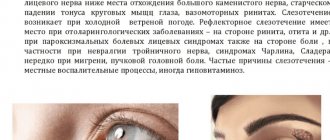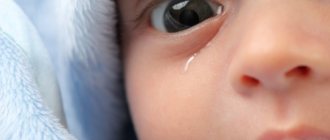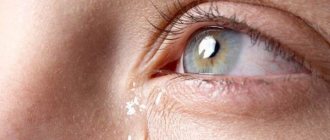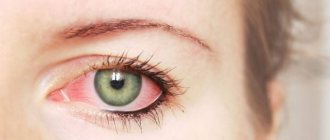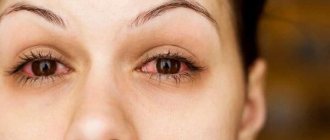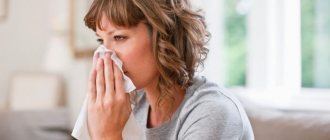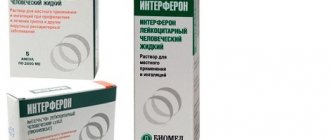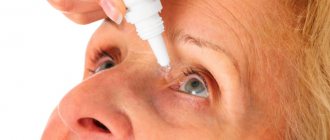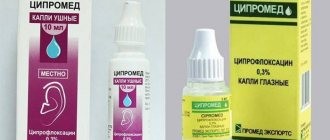A stuffy nose, abnormal sneezing, and increased tearing are both a natural reaction of the body to an unfavorable external environment and symptoms of diseases. It is necessary to stop symptoms in the early stages in order to prevent pathologies from progressing.
A runny nose, increased lacrimation, red eyes, sneezing – these are all the body’s protective reactions against pathogens and an unfavorable environment. All people experience symptoms from birth. The phenomenon is so common that there is even a popular saying: “If you don’t treat a runny nose, it will go away in a week, but if treated, it will go away in 7 days.” This does not mean that the symptoms can be safely ignored and not treated. An unpleasant reaction of the body may indicate serious illness. The most common include influenza, acute respiratory viral infections, and acute respiratory infections. Although seasonal pathologies cause concern, they quickly go away with timely treatment. It is much more dangerous when a “running nose” appears and the eyes water due to allergies. If measures are not taken, the immunopathological process can develop into bronchial asthma - a chronic disease that poses a direct threat to life. Therefore, you should play it safe and start treating a runny nose, abnormal sneezing, and red, watery eyes immediately.
Rhinitis or runny nose - what's the difference?
Before you begin treatment for a runny nose, you should find out the nature of the origin of the symptom. This will not only ensure successful therapy, but will also eliminate complications associated with taking inappropriate medications. A runny nose, also known as rhinitis, is a common disease of the upper respiratory tract, of infectious and non-infectious etiology. The syndrome is accompanied by inflammation and swelling of the nasal mucosa, which leads to characteristic discharge. The causes of non-infectious rhinitis can be:
- Mechanical injuries - damage to the nasal mucosa will inevitably lead to rhinitis. Therefore, standard hygiene procedures should be approached with caution and general safety rules should be followed.
- Hypothermia - at low temperatures, the nasal sinuses narrow, cold air causes inflammation and with it vasomotor rhinitis.
- Allergens are chemical, natural substances with a strong antigenic character that cause swelling and inflammation of the nasal mucosa. The result is allergic rhinitis.
- Medicines – up to 50% of people are intolerant to some medicine. This can be either banal aspirin or drugs with a complex chemical composition. The body immediately turns on the defense - drug-induced rhinitis appears: the eyes become watery and red, and frequent sneezing appears.
- Unfavorable external environment - poor ecology, air pollution, dust, difficult working conditions contribute to the development of chronic rhinitis.
Infectious rhinitis, in turn, is caused by bacteria, viruses and fungi. Colonies of microorganisms are constantly present in the body in natural quantities. Under favorable conditions, they begin to grow rapidly and become pathogenic. This is facilitated by weakened immunity, the cold season and outbreaks of seasonal diseases. All the symptoms of acute rhinitis appear - profuse nasal discharge, complicated by purulent foci, tearfulness, sneezing.
Reasons: why does this symptom appear?
Why else might the symptom occur? In addition to the cold itself, the causes of watery eyes can be diseases such as sinusitis or sinusitis.
In cases of colds or runny nose, pathogens accumulate in the sinuses.
As a result of this, the nasal passages become clogged not only with these infectious masses, but also with the products of their vital activity and decomposition.
Such accumulations irritate the mucous membranes of the nasal passages.
And since these paths connect with the tear ducts, purulent accumulations are partially released in the form of tear fluid with mucous impurities.
The more the nasolacrimal ducts are blocked, the more fluid is released through the tear ducts.
Sinusitis and sinusitis are inflammatory cold pathologies in which there is an accumulation of discharge in the nasal (maxillary) sinuses.
Additional accompanying symptoms in such cases are general malaise, cough, runny nose.
Know! Often there is an increase in temperature and headaches, as well as pain in the infraorbital area (due to the accumulation of purulent discharge in such areas, which puts pressure on the tissue from the inside).
Symptoms may include a feeling of pressure in the sinuses and difficulty breathing.
General signs of rhinitis
A runny nose, like most pathologies of the upper respiratory tract, has several stages of development. Frequent sneezing, runny nose and watery eyes are the initial symptoms of a disease of any etiology. If measures are not taken, the pathological condition will progress:
- "Dry" stage. It is characterized by itching in the nasal passages, frequent sneezing with minor discharge, pain in the eyes, and impaired sense of smell. The stage passes without fever.
- "Wet" stage. A runny nose is fully manifested. The discharge is abundant, the volume can reach up to 500 ml per day. The mucus is still thin and clear. Swelling of the mucous membrane affects the vocal cords - a characteristic “nasality” appears. The symptoms continue to increase and get worse. My eyes are constantly watering.
- Purulent stage. Inflammation of the mucous membrane leads to the appearance of purulent foci. The discharge takes on a yellowish or greenish tint and becomes thick and viscous. It becomes difficult to blow your nose. The sneezing almost stops. The eyes are red and constantly watery. Sinusitis and fever may develop.
At all stages of rhinitis development, you should not try to get rid of mucus by any means. Sneezing naturally removes excess fluid from your sinuses. With additional impact on the mucous membrane (intense blowing of the nose), the swelling becomes greater and, as a result, the symptoms worsen. If treated this way, you can injure the eardrum and then a common runny nose can turn into a serious otolaryngeal disease.
Prevention
Preventive measures can prevent the return of watery eyes and runny nose. To do this, just follow a few rules:
- try to avoid crowded places during periods of mass illness;
- strengthen the child’s immunity in different ways (air baths, age-appropriate hardening, regular physical activity);
- try to exclude the child from contact with the allergen and try to use hypoallergenic products for body hygiene;
- feed the baby a variety of foods, include vegetables, fruits, fish, liver, and nuts in the diet;
- humidify the room in which the child is located (dry air provokes various diseases).
You should not risk the health of your own child, and therefore, if you have watery eyes and a runny nose, you should consult a specialist to determine the cause of such symptoms and carry out therapy. This will prevent the spread of the disease and the occurrence of consequences.
voice
Article rating
Types of runny nose: general information for successful treatment
To prevent the saying about treating a runny nose from becoming a reality, medications are prescribed depending on the type of rhinitis. It is strongly recommended to consult a doctor for differential diagnosis. A runny nose, sneezing, and red and watery eyes do not in themselves pose a threat to life and rarely cause complications. But self-medication and taking inappropriate medications can provoke irreversible changes in the upper respiratory tract - from addiction to complete deformation of the nasal septum. In order for the prognosis of the disease to be 100% positive, you should make sure that the treatment corresponds to the type of rhinitis:
- Acute rhinitis. As a rule, it is a consequence of viral seasonal diseases - influenza, ARVI, acute respiratory infections. As well as “children’s” infectious pathologies such as measles, chicken pox, etc.
- Chronic rhinitis. This is advanced acute rhinitis. It has its own forms, depending on the cause of the runny nose. In medicine it is classified as: atrophic (reduction in the volume of the nasal passages due to autoimmune diseases, genetic disorders); hypertrophic (abnormal growth of mucosal tissue); neurovegetative rhinitis (drying of the mucous membrane with medications).
- Vasomotor rhinitis. It develops under unfavorable external conditions: negative temperatures, dust, intense chemical odors. In medical practice, vasomotor rhinitis is divided into hormonal and medicinal types.
- Traumatic rhinitis. A runny nose appears and the eyes begin to water due to damage to the tissues of the mucous membrane by hot steam, cold air at low temperatures, chemicals, sharp objects, etc.
A runny nose is no different from other pathologies. Therefore, conservative treatment is aimed at eliminating the cause. Sprays and drops for topical use are aids for relieving unpleasant symptoms of a runny nose, such as sneezing and red eyes. To alleviate the condition, antiseptic, moisturizing and vasoconstrictor drugs are prescribed. Their use is justified when primary signs of a runny nose occur in the case of diagnosed chronic rhinitis. For allergic rhinitis, antihistamines and diuretics are indicated to relieve swelling of the mucous membrane. Traumatic and vasomotor runny nose does not respond to standard therapeutic regimens. Physiotherapy will help cure, and in especially severe cases, surgery to correct defects of the nasal passages and septum.
The child has watery eyes and a runny nose
These symptoms cause the most problems to children and their parents who are concerned about the child’s condition.
Let's list the most common reasons why a child has watery eyes and a runny nose: he has a cold, allergies, adenoiditis, inflammation of the paranasal sinuses or a foreign body in the nose.
To accurately diagnose the problem, you need to know what other symptoms accompany the disease, as well as conduct a thorough examination of the baby and, if necessary, take tests and perform other studies.
If your baby has watery eyes and a runny nose
In infants there is a so-called physiological rhinitis.
What does it mean? The baby's nasal passages are narrow, and the nasal cavity secretes mucus to moisturize and protect the mucous membrane. This mucus accumulates in the nose, dries into crusts and prevents the child from breathing. In this case, there is no temperature, and the little patient is no longer worried about anything.
You can get rid of such mucus and crusts with a special children's aspirator or cotton wool pads soaked in sterile Vaseline.
Medicines for quick treatment of runny nose
Before reviewing the best drugs for the treatment of rhinitis, it should be clarified that all specific medications will not have a significant effect on the course of the disease. In other words, medications will relieve the symptoms (watery and red eyes, runny nose, itching), but will not eliminate the cause. Therefore, you should choose from a huge assortment the safest products, which have side effects that are minimized or completely absent. All medications for the treatment of rhinitis are divided into five large groups: vasoconstrictors, antihistamines, antibacterial, antiseptic, moisturizing and immunomodulatory. In turn, each pharmacological group has its own favorites.
Vasoconstrictor drugs
The drugs in the group are comparable to the simplest painkillers or anti-inflammatory drugs. They are intended only to relieve the unpleasant symptoms of a runny nose - heavy discharge, sneezing and watery eyes. Everything that prevents a person from working normally and doing household chores. Pharmacies offer a huge range of vasoconstrictor drugs. All medications can be divided according to their active ingredients:
- Xylometazoline – reduces swelling, hyperemia, facilitates breathing. It begins to act almost instantly, the effect lasts up to 6-10 hours. Contraindicated for children under 6 years of age, pregnant women, and people with cardiovascular diseases.
- Naphazoline – relieves the primary symptoms of a runny nose for 4-6 hours. It is toxic and therefore contraindicated in children under 6 years of age. The course of treatment for adults should not exceed 7 days to avoid addiction to the components of the drugs.
- Oxymetazoline - reduces swelling of the nasal passages, reduces the volume of secretions, and makes breathing easier. Has a prolonged effect up to 8 hours. Used to treat rhinitis in adults and children over 1 year of age.
The table presents the best drugs of the group, which will quickly alleviate the unpleasant condition and help cure rhinitis.
| Name of the drug | Pharmacological form | Directions for use and doses | Active ingredient content | Average cost, rubles |
| Xylometazoline | ||||
| Galazolin | Drops, nasal gel | 2-3 drops 2-3 times a day for 3-5 days | 0,05% — 0,1% | 35,00 – 42,00 |
| Tizin | Drops | 2-4 drops every 4 hours for no more than 5 days | 0,05% — 0,1% | 100,00 – 150,00 |
| Snoop | Nasal spray | 2 injections 3 times a day for no more than 7 days | 0,05% — 0,1% | 100,00 – 150,00 |
| Xymelin | Drops, spray | 2-3 drops or 1 dose 1-3 times a day for no more than 7 days | 0,05% — 0,1% | 50,00 – 190,00 |
| Eucazoline Aqua | Spray | 1 dose 3-4 times a day for 7 days | 1 mg/g | 90,00 – 110,00 |
| Naphazoline | ||||
| Naphthyzin | Spray, drops | 1-3 drops 3 times a day for no more than 7 days | 0,05% — 0,1% | 10,00 – 50,00 |
| Sanorin | Spray, drops | 1-3 drops or 1-3 doses up to 4 times a day for no more than a week | 0,05% — 0,1% | 120,00 – 180,00 |
| Sigida crystal | Eye drops | 1 drop 1-2 times a day for no more than 5 days | 0.05% | 190,00 |
| Ivilekt | Nasal spray | 1 dose 3 times a day for no more than 7 days | 0.1% | 180,00 |
| Naphazoline-Ferein | Nasal drops | 1-2 drops 3 times a day for 5 days | 0.05% — 0.1% | 150,00 |
| Oxymetazoline | ||||
| Nazivin | Drops, spray | 1 drop 3 times a day for 3-5 days | 0.025%, 0.05%, 0.1% | 130,00 – 180,00 |
| Afrin | Nasal spray | 2-3 injections every 12 hours for no more than 7 days | 0.05% | 180,00 – 190,00 |
| Knoxprey | Spray | 2 sprays every 12 hours for no more than 5 days | 0.5 mg/ml | 100,00 |
| Nazol | Dosed spray | 2-3 doses 2 times a day for no more than 3 days | 0.025 mg/dose | 100,00 – 180,00 |
| Rhinostop | Drops, spray | 3-4 doses or 1-2 drops 3 times a day for 5 days | 0.025%, 0.05%, 0.1% | 90,00 – 140,00 |
Moisturizers for the treatment of runny nose
Vasoconstrictors belong to the “first aid” category. They will not be able to cure a runny nose. Their use is justified only in cases of severe symptoms, when the condition causes really great inconvenience and interferes with full-time work (profuse discharge from the nose and watery eyes). At the initial “dry” stage, it is better to give preference to moisturizers that safely soften the mucous membrane and prevent further development of the disease.
Moisturizing preparations stimulate normal blood circulation, soften keratinized particles, localize the pathological process in one place, preventing the infection from spreading to other organs of the upper respiratory tract (eyes, ears, throat, bronchi). Medicines are suitable for the prevention and treatment of vasomotor rhinitis in children and adults.
The most popular moisturizers are:
- Aqualor Soft. Available in aerosol form. The drug is intended for rinsing the nasal cavity during an outbreak of seasonal diseases. The product contains sea water (30-35 ml per 100 ml), which allowed the manufacturer to increase the NaCl content to 8–11 g/l. It cleanses the nasal sinuses well, softens the mucous membrane, and stimulates blood circulation. The average cost in pharmacies varies between 350 rubles.
- Aqua Maris. This is a whole line for the prevention and treatment of all types of rhinitis based on water from the Adriatic Sea. Contains selenium, iodine, zinc and magnesium ions. The components strengthen the natural protection of the nasal sinuses from the penetration of pathogenic microorganisms, relieve inflammation and swelling. Suitable for people with high sensitivity and children from birth. Available in the form of drops, sprays, rinsing systems, and metered aerosols. The cost is about 360 rubles.
- Rinostop Aqua Stop. Sea salt solution for the complex treatment of rhinitis, sinusitis, sinusitis. Widely used to relieve symptoms of vasomotor rhinitis. The safe composition allows treatment and prevention for allergy sufferers, pregnant women and children from 6 months. The average cost in pharmacies in the Russian Federation is 380 rubles.
A huge advantage of moisturizing preparations is the absence of contraindications and side effects. Products based on sea water rather than diluted sea salt are especially effective. This should be taken into account when choosing a medicine for the quick treatment of a runny nose, which causes sneezing and watery eyes.
Antihistamines
Allergic rhinitis is the most unpredictable and dangerous of all types of rhinitis. Determining the causes can be difficult due to the huge number of allergens and the need to conduct multiple samples. Tests are expensive and not all people are willing to pay a fortune to find out what causes a runny nose, watery eyes and sneezing. Therefore, it is necessary to select a drug with a universal effect that will alleviate the symptoms. In turn, antihistamines have a lot of side effects and contraindications, including signs characteristic of rhinitis: the eyes begin to water and hurt, nasal discharge becomes more abundant. Therefore, the best option would be to consult a doctor and develop a suitable treatment regimen.
Of the new generation drugs that have a more gentle effect on the body, the following are popular:
- Suprastinex. The active substance is levocetirizine dihydrochloride. Available in the form of tablets and drops for internal use. Indicated for hay fever, with characteristic symptoms: watery eyes, runny nose, sneezing. Recommended for adults and children over 6 years of age. The course of treatment is on average 14 days. It has many restrictions and contraindications. Please read the instructions carefully before use! The average cost is 200 - 250 rubles.
- Lordestin. Tablets with the active ingredient desloratadine hemisulfate. Prevents the occurrence of severe allergic reactions, including runny nose, pain in the eyes (or watery eyes), frequent sneezing, and nasal congestion. Taken once a day for no more than 5 days in a row. The cost of a package of 10 tablets is 300 rubles.
- Fexadine. Fexofenadine hydrochloride tablets are indicated for the relief of hay fever symptoms. It is justified to take the drug when the eyes are watery, there is excessive discharge from the nose, itching, and frequent sneezing. The tablets are taken orally once a day. The drug is contraindicated in children under 12 years of age, pregnant women, and patients with diagnosed renal failure. Cost 300 – 350 rubles.
Drugs with minimal side effects and contraindications are listed. But it is worth noting that there are no completely safe antihistamines. Therefore, they should only be taken by those people whose allergies are confirmed by diagnostic studies.
Antiseptics
Antiseptic drugs, which help to avoid infection of the nasal mucosa, are undeservedly ignored when treating a runny nose. But they become indispensable for traumatic and purulent rhinitis, when popular nasal drops do not have any therapeutic effect. Antiseptics can be easily found in pharmacies or you can prepare rinsing solutions yourself. These include the usual and cheap means:
- iodine;
- hydrogen peroxide;
- potassium permanganate (potassium permanganate);
- boric acid;
- silver nitrate;
- furatsilin;
- miramistin.
The drugs have been used for decades to treat rhinitis and have proven effectiveness. The main advantages are the affordable cost (up to 50 rubles), the absence of contraindications and side effects, provided that the solution for rinsing the nose is prepared correctly.
Antibiotics for the treatment of runny nose
Antibacterial drugs are among the heavy medical artillery. They are used only as prescribed by a doctor, due to the large number of strains of bacteria. Self-treatment is strictly not recommended. Antibiotics not only have a strong effect on pathogenic microorganisms, but also cause the death of beneficial microflora. The drugs are taken in combination with probiotics. The treatment regimen is individual and cannot be used even with identical symptoms. It is worth considering that among the side effects of antibiotics there are allergic reactions, with signs characteristic of rhinitis: the eyes will begin to water, sneezing and profuse nasal discharge will appear. Therefore, it is necessary to carefully assess all the risks and take specific drugs only when directly indicated.
Immunostimulants
Drugs that stimulate the immune system are used during periods of exacerbation of seasonal diseases, when an itchy nose and watery eyes become almost the norm for an adult. If you use immunomodulators in the form of a nasal spray, you can achieve two goals at once - quickly eliminate the symptoms of a runny nose and strengthen the body's protective function. The safest and most effective stimulants are:
- Genferon in the form of nasal drops and spray (400-600 rubles).
- Thymogen in the form of a nasal spray (370 rubles).
- Grippferon in the form of a spray and drops (200-300 rubles).
- Ingaron in powder form for preparing a solution (1500 rubles).
- Dr. Theiss Echinacea forte drops for oral administration (285 rubles).
Immunostimulants should be taken with caution, and only on the advice of a doctor. Even seemingly harmless herbal-based preparations can cause severe allergic reactions that can aggravate the symptoms of rhinitis, in particular, the eyes will begin to water more, sneezing will become incessant, and the itching in the nose will be painful.
How to choose the right drug for quick treatment of a runny nose?
There are a huge number of medications for the treatment of rhinitis of various etiologies. But a person has one health and must be treated responsibly. You can uncontrollably take various drugs, trying to eliminate the “nasal” voice and redness in the eyes. But most of them will have an inevitable effect on the entire body. The only exception is products based on sea water. But even with prolonged use they can cause irreparable harm to the nasal mucosa, in particular, completely change the pH balance. The result is that runny noses will become an integral part of life, due to abnormal dryness in the nose or addiction to your “favorite” nasal spray.
Photo: ulleo / Pixabay.com
Caution, reason and moderation are the main rules when treating a runny nose. And, of course, do not forget about the golden axiom: prevention is the best therapy for any disease. Rhinitis is difficult to prevent. As mentioned above, this is a protective reaction of the body. But observing basic hygiene standards, quality nutrition, clothing for the season and taking vitamins work wonders. Symptoms of a runny nose become short-term, quickly disappear on their own or require one-time drug intervention.

